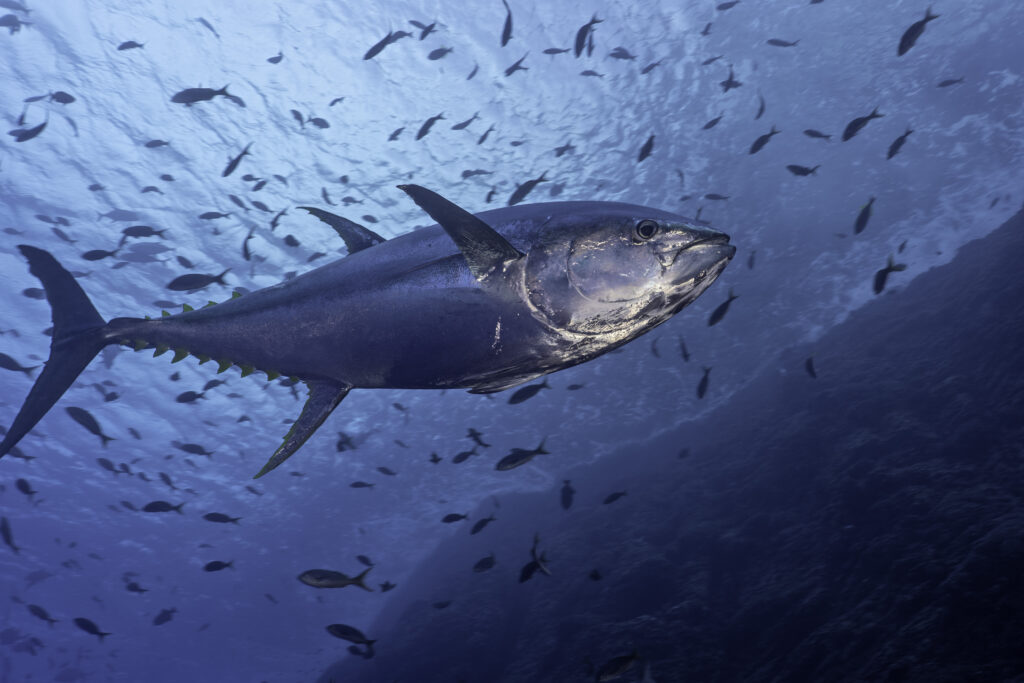Pacific Bluefin Tuna and Harvest Strategies for Sustainable Fisheries Management
Pacific bluefin tuna is one of the most widely recognized and consumed tuna species, enjoyed in various forms such as canned products, sashimi, and frozen foods. Due to its high value and popularity in countries like Korea, Japan, the United States, and across Europe, the species has been subjected to decades of intensive fishing pressure. This has brought the stock close to depletion, raising urgent concerns about conservation.
In response to the overfishing of this species, two major Regional Fisheries Management Organizations (RFMOs) responsible for the sustainable management of Pacific fisheries—the Inter-American Tropical Tuna Commission (IATTC) and the Western and Central Pacific Fisheries Commission (WCPFC)—have launched joint discussions to strengthen the management of Pacific bluefin tuna and are preparing related regulatory measures.

Through these discussions, both RFMOs are developing a Harvest Control Rule (HCR) framework based on a Harvest Strategy approach for Pacific bluefin tuna. In Korea, fishing for this species primarily takes place in the nearshore waters off Jeju and the East Sea, which fall under the jurisdiction of the WCPFC. Accordingly, Korea’s fishing operations will be subject to the HCRs that are expected to be finalized.
The concept of harvest strategies has emerged as a response to the growing unpredictability of fisheries resources caused by climate change, shifting fishing grounds, and increasing levels of illegal, unreported, and unregulated (IUU) fishing. Traditional fisheries management—based on stock assessments, followed by scientific advice and intergovernmental negotiations to allocate quotas—has faced criticism for its inability to cope with uncertainties, limited biological and fisheries data, and the politicization of quota-setting processes. These shortcomings have often led to overexploitation and delays in stock recovery.
Harvest strategies address these issues by establishing a pre-agreed framework that determines management actions automatically based on the current status of the stock. This approach allows for more predictable, science-based, and consistent fisheries management, with enhanced capacity to respond to external changes.
A harvest strategy is typically composed of four main components:
- Management Objectives – clear, measurable goals for maintaining healthy fish stocks and stable catch levels, with defined timelines;
- Reference Points – thresholds for evaluating stock status, typically including a Limit Reference Point (LRP) indicating a critical depletion level requiring immediate action, and a Target Reference Point (TRP) representing an optimal stock status to be maintained;
- Harvest Control Rules (HCRs) – pre-set rules that specify what management actions should be taken when the stock moves above or below reference points, such as reducing or increasing fishing effort automatically;
- Management Strategy Evaluation (MSE) – simulation-based testing to ensure that the harvest strategy is effective and robust across a range of possible future scenarios.
Harvest strategies are particularly valuable for developing science-based, adaptive, and precautionary fisheries policies under uncertainty. Although rooted in science, successful implementation depends heavily on policy commitment and collaborative governance. Scientists develop the models and analyses, but governments, industry, civil society, and RFMO members—including Korea—must work together to define reference points, agree on acceptable risk levels, and build enforcement mechanisms. Ultimately, harvest strategies are not short-term tools for maximizing catch but long-term frameworks for reducing uncertainty and enabling sustainable fisheries in a changing environment.
Returning to pacific bluefin tuna, ongoing discussions at the WCPFC and IATTC are expected to culminate in the selection of a final HCR from among several proposed scenarios. It is hoped that the chosen strategy will prioritize resource conservation and long-term sustainability. Korea, too, must consider transitioning toward science-based fisheries management and begin preparing for the domestic implementation of harvest strategies aligned with international frameworks.
